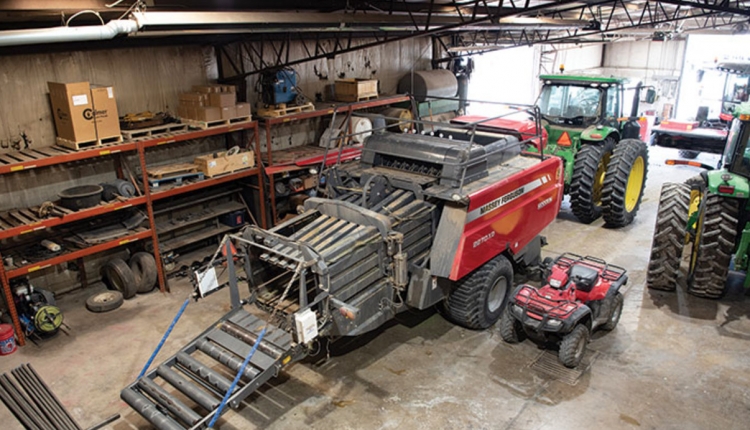The author is a managing partner in Elite Ag LLC, Leesburg, Ga. He also is active in the family farm in Rutledge.

As winter is fully entrenched in our everyday lives, some of us are itching to get back onto the tractor seat. Of course, if you’re like me and own livestock, then it seems you never miss a day on the tractor all year round. The cold days and slower pace of winter usually offer us time to look back over the previous year and figure out what we can do better in our operations. This includes evaluating ways to improve the efficiency of our equipment line. In this column, I want to discuss some of the trends that I see coming in 2023.
The good news is that most of the major commodity prices are predicted to remain strong for the year. This also goes for the milk and beef industries. I believe the latter is in for several years of good pricing in all phases due to low cow numbers around the country.
These exciting times with great prices, super genetics, and efficient equipment can make us as profitable as ever if the stars align and Mother Nature cooperates. However, the equipment and finance sectors have had some changes over the last year that have put a damper on a farmer’s chances of operating in the black. The drastic upswing in the cost of equipment has left ranchers scratching their heads and wondering what to do.
A run on used equipment
With all of the electronics and emissions on new iron, some farmers have gone to the auctions, and we have seen some outrageous prices on low-hour, pre-emission tractors. This was also aided by the reduced supply of new equipment being produced, which has caused a reduction of used equipment trades at the dealership. Unfortunately, I do not see this trend changing in the coming year. Good used equipment will still be hard to find and will command a premium price.
However, I do see some light at the end of the tunnel in the new equipment sector from a production standpoint, especially in the 150 horsepower (hp) and undertractor market. More of these tractors are going to start showing up on our lots this year; however, I believe the 50 hp and under market will retract quite a bit with inflation and rising interest rates. Homeowners and hobby farmers will not be spending money on a new tractor unless it is a must-have, and then I believe they will put more money down and finance less.
For the high-hp tractors, it will be more of the same as in 2022. I think that manufacturers have a good handle on production capabilities, and delivery dates will be more reliable than in previous years. Don’t be shocked, though, if you go into your local dealership to order a tractor and they tell you it won’t be delivered for a year. The strong demand for high-hp tractors is still alive.
Tough times in Europe
For harvesting equipment, this sector’s supply will be shorter than others, especially forage harvesters. I don’t see an abundance of production coming to the U.S. from Europe this year. European countries are in the middle of some trying economic times, and the cost of production, electricity, gas, and freight have all skyrocketed. Some manufacturers have seen a 10% to 15% rise in costs from 2022 to the 2023 model years. Although customers are hoping prices will come back down in a year or so, this may be wishful thinking as prices never seem to retreat; they just stop going up.
We may find companies are willing to offer incentives for certain models in the future, but don’t expect everything to be cheaper. Even if dealers’ inventories begin to rise, the best we can probably hope for is stable prices in 2024.
Finally, the most eye-opening thing last year was the interest rate hikes. There is not much good news here either, as most large bank forecasters are saying there will be a few more rate increases in the first two quarters of this year. They hope things will level off after that. So, it will be a couple of years before I anticipate the $0 down and 0% promotions coming back.
I hope this helps shed some light on the market for this year. Stay warm and stay safe.
This article appeared in the February 2023 issue of Hay & Forage Grower on page 31.
Not a subscriber? Click to get the print magazine.

